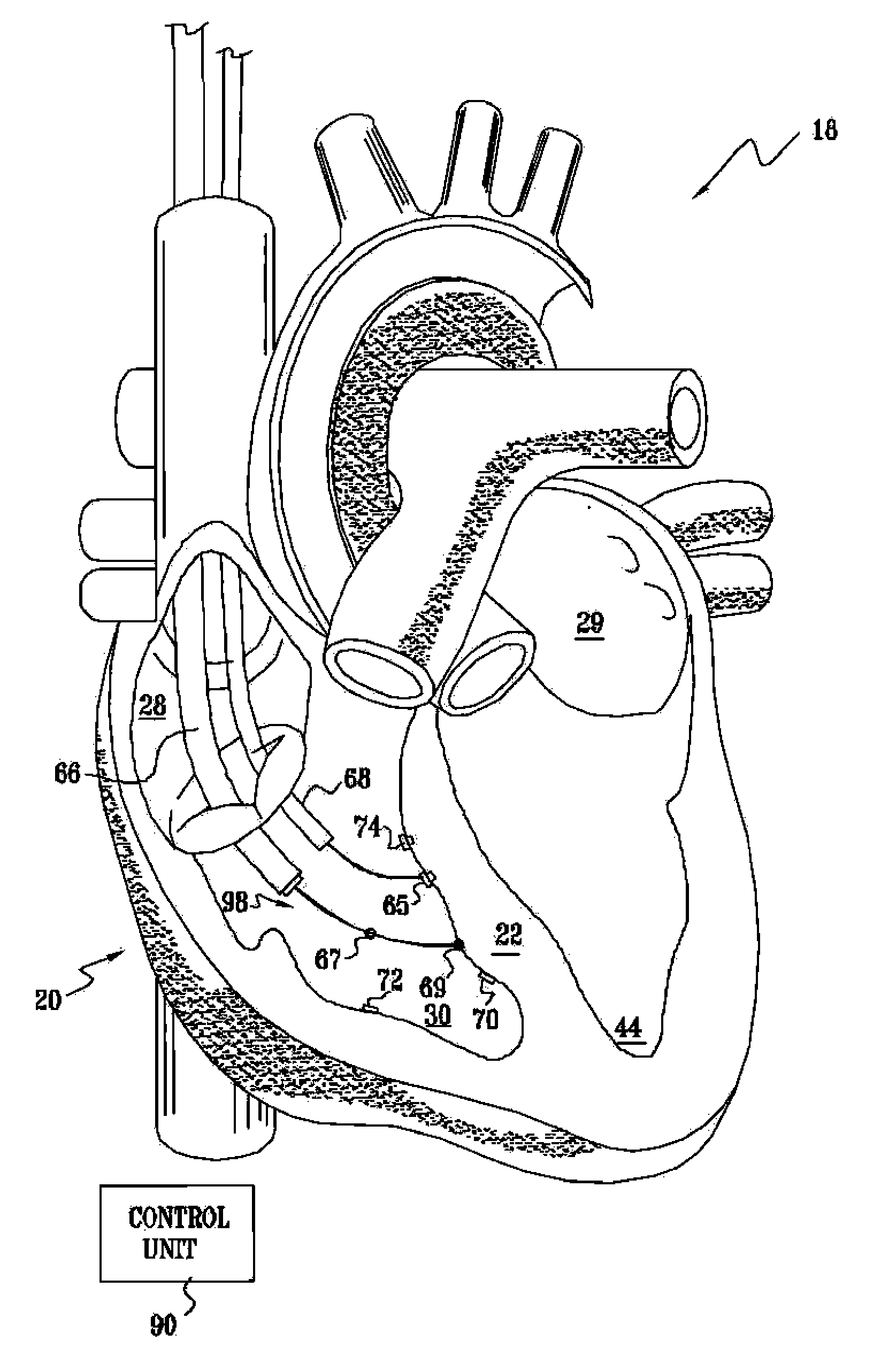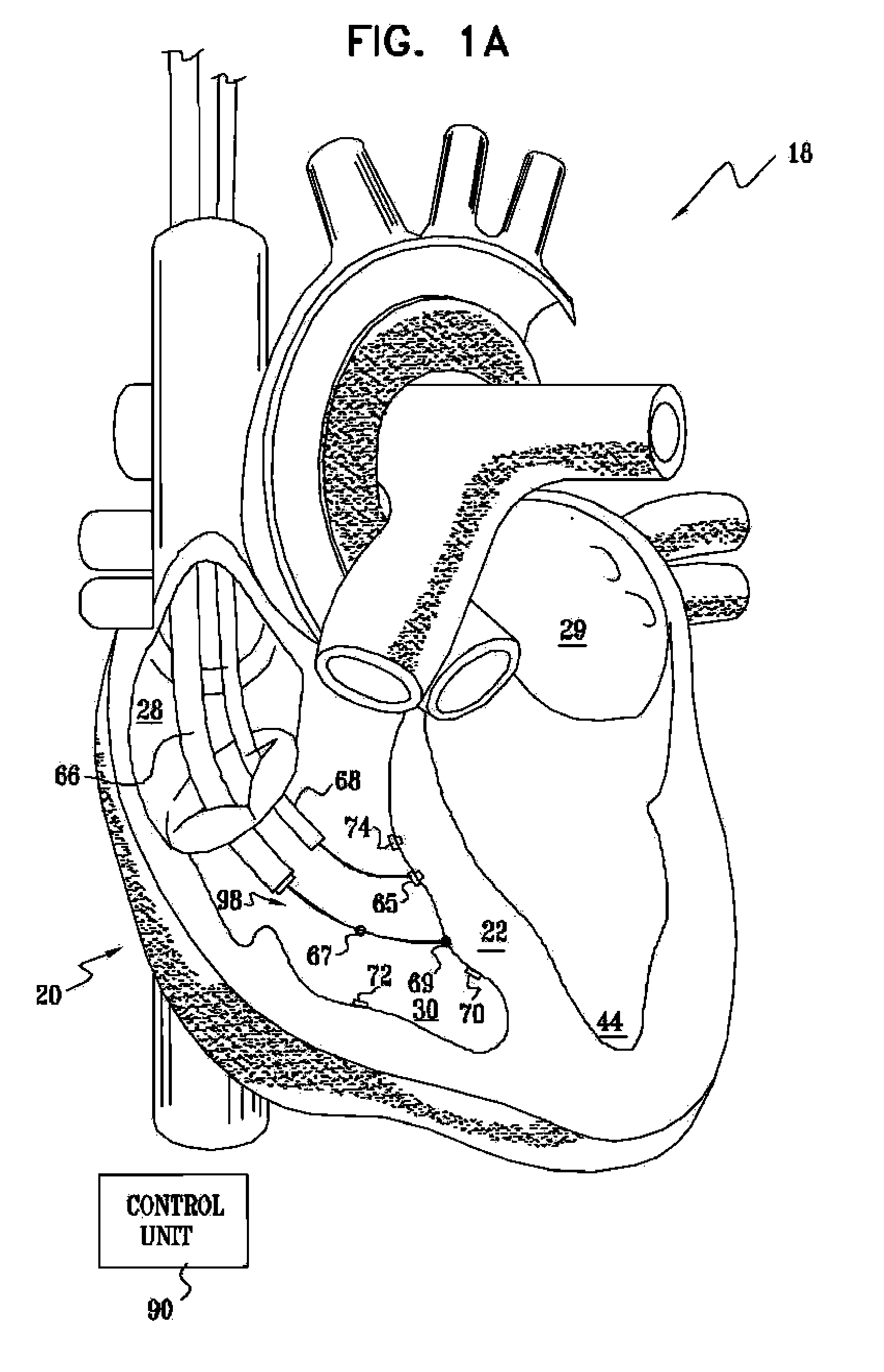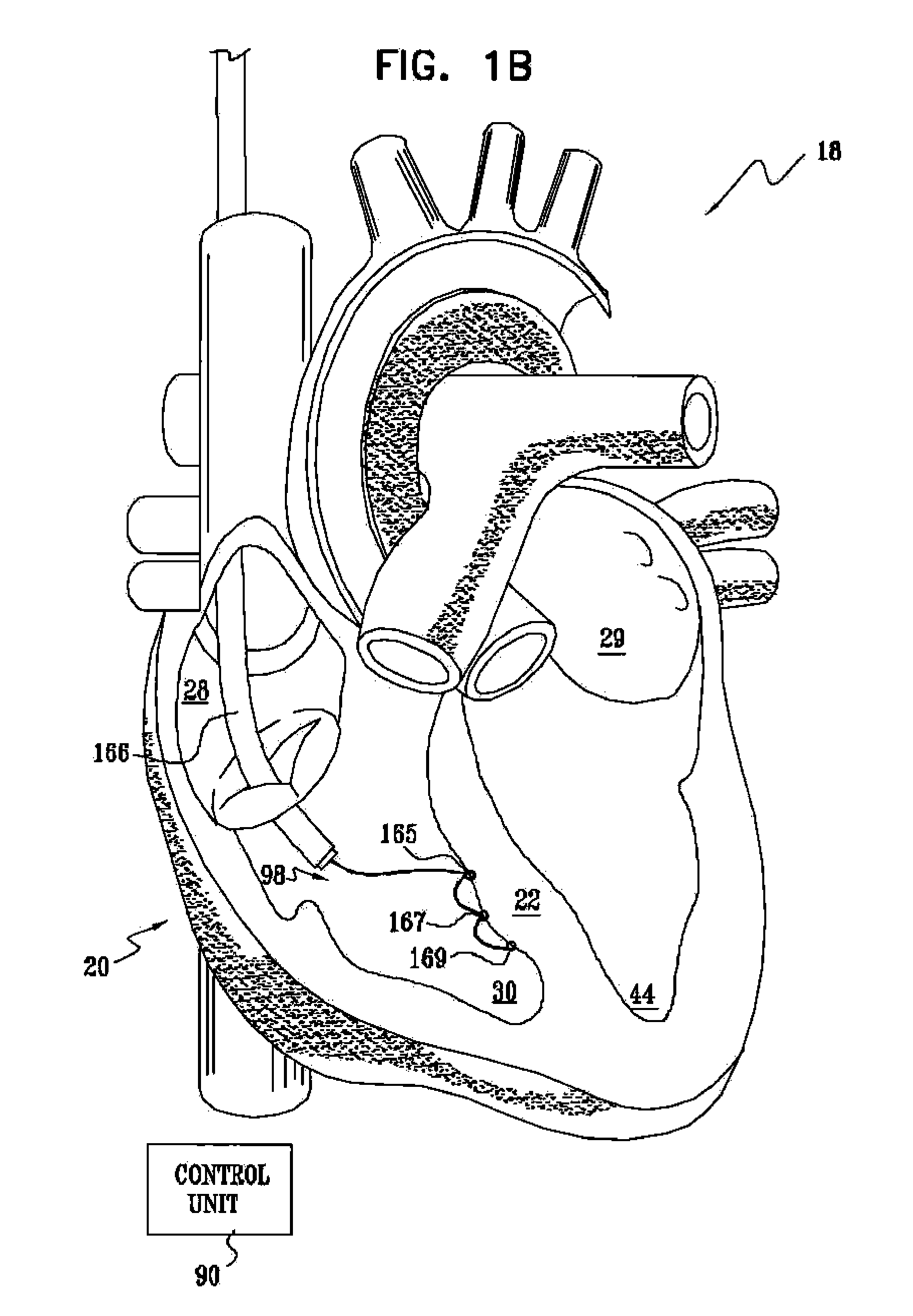Signal Delivery Through The Right Ventricular Septum
a right ventricular septum and signal technology, applied in the field of invasive devices and methods for treating the heart, can solve the problems of inability to sustain normal pumping function in the infarct, damage to the heart tissue, and damage to the normal regulatory mechanism, so as to reduce the contractility of the heart portion, increase the contractility of the heart portion, and reduce the contractility of the interventricular septum
- Summary
- Abstract
- Description
- Claims
- Application Information
AI Technical Summary
Benefits of technology
Problems solved by technology
Method used
Image
Examples
Embodiment Construction
[0126]FIG. 1A is a schematic illustration of cardiac control apparatus 18, which applies electrical energy to improve the performance of the heart 20 of a patient in accordance with a preferred embodiment of the present invention. Apparatus 18 preferably comprises an implantable or external control unit 90, which applies an ETC signal through a set of one or more electrodes 98 to the heart. (For clarity, connections between control unit 90 and the various electrodes are not shown).
[0127] Preferably, a catheter 68 is used to convey a screw electrode 65, or other type of electrode, through the right ventricle 30 to a site on the interventricular septum 22 to which the electrode is attached. Alternatively or additionally, a catheter 66 conveys an electrode 69 through the right ventricle to be fixed to the septum, and / or conveys an electrode 67 into the right ventricle, where it is in electrical contact with electrodes 65 and 69 through the blood in the right ventricle. In a preferred ...
PUM
 Login to View More
Login to View More Abstract
Description
Claims
Application Information
 Login to View More
Login to View More - R&D
- Intellectual Property
- Life Sciences
- Materials
- Tech Scout
- Unparalleled Data Quality
- Higher Quality Content
- 60% Fewer Hallucinations
Browse by: Latest US Patents, China's latest patents, Technical Efficacy Thesaurus, Application Domain, Technology Topic, Popular Technical Reports.
© 2025 PatSnap. All rights reserved.Legal|Privacy policy|Modern Slavery Act Transparency Statement|Sitemap|About US| Contact US: help@patsnap.com



